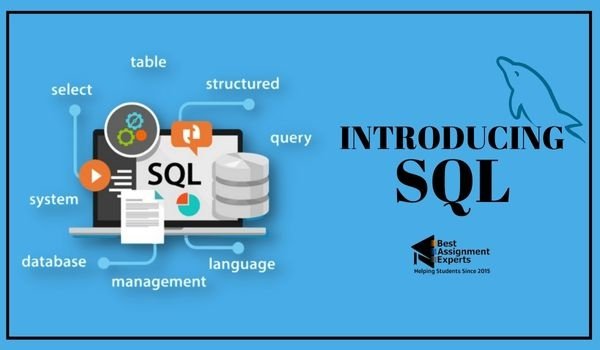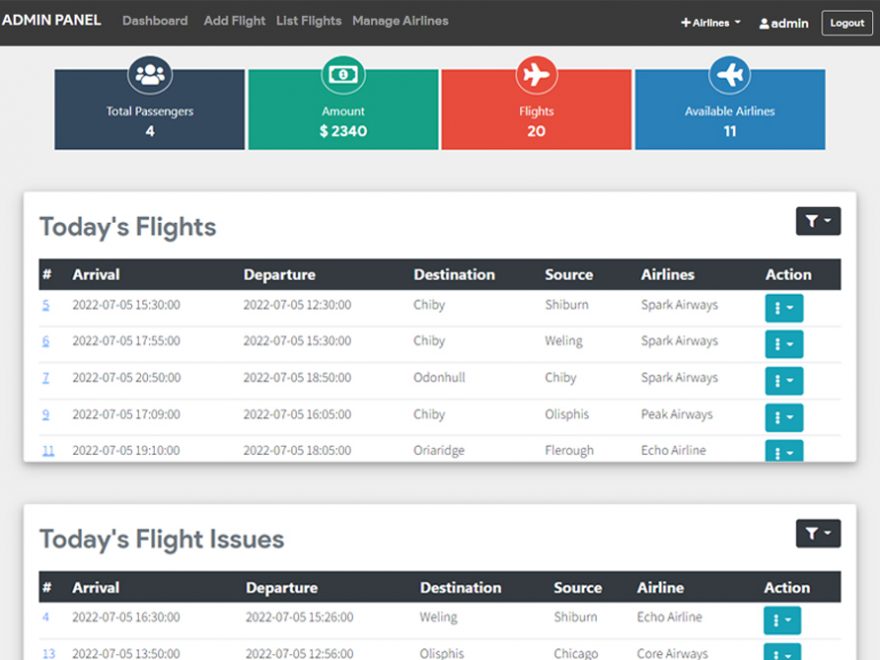We will study about Sequel Programming Languages in this post (SQL). SQL is used by large corporations like Facebook, YouTube, and Google to store data in the back end. Thus, it is the most crucial query language to understand if you want to work in the data industry. Before we begin, let me make it clear that all of these terms—SQL, sequel programming languages, sequel coding, sequel computer language, sequel database language, etc.—are interchangeable. The sequel is how people pronounce SQL; hence, while speaking SQL, individuals use the sequel. Let’s go.
What is Sequel Programming Language?
Structured English Query Language (SEQUEL) is a database language used to create and manage databases. It was developed by IBM in the 1970s and was later standardized as SQL (Structured Query Language). SQL is used to communicate with databases and is the standard language for relational database management systems.
Sequel is a domain-specific language (DSL) used to describe and execute database queries. It is typically used with databases that use the Structured Query Language (SQL) to manage and manipulate data, although it is not limited to this use case.
Sequel is designed to be a lightweight and easy-to-use alternative to writing raw SQL statements. It provides a clean, intuitive syntax for constructing queries and is often used in the development of web applications to interact with databases.
Some of the features of Sequel include:
- Support for a wide range of database systems, including MySQL, PostgreSQL, and SQLite
- An API for constructing and executing queries
- Support for transactions and database schema manipulation
- An object-relational mapper (ORM) for working with database data in an object-oriented way
Sequel is implemented in the Ruby programming language, but it can be used with any programming language that has a database driver or library that supports SQL.
several programming languages that use SQL
There are several programming languages that use SQL, including:
- MySQL: MySQL is an open-source relational database management system that is widely used on the web. It is known for its speed, reliability, and ease of use.
- PostgreSQL: PostgreSQL is an open-source object-relational database system that is known for its stability, data integrity, and support for advanced data types.
- Microsoft SQL Server: Microsoft SQL Server is a popular database management system that is commonly used in corporate environments. It is known for its scalability and support for business intelligence and data analytics.
- Oracle: Oracle is a popular database management system developed by Oracle Corporation. It is known for its scalability, security, and support for large amounts of data.
- SQLite: SQLite is a self-contained, serverless, zero-configuration, transactional SQL database engine. It is commonly used in mobile devices and web browsers because of its small size and minimal requirements.
SQL is used to create, modify, and query databases for storing and organizing data. It is a powerful language that allows users to perform a wide range of operations, including creating tables, inserting and updating data, creating views, and more.
If you are interested in learning more about Sequel programming languages, there are many resources available online, including tutorials, documentation, and online courses. Some good places to start include the official documentation for the programming language you are interested in and online communities and forums where you can ask questions and get help from other users.
Sub languages Of Structured Query Language(SQL)
Structured Query Language (SQL) is a programming language used to create, modify, and query databases. There are several sublanguages or dialects of SQL, including:
- Data Definition Language (DDL): DDL is used to define the database structure or schema. It includes commands for creating, modifying, and deleting database objects such as tables, indices, and views.
- Data Manipulation Language (DML): DML is used to manipulate data in the database. It includes commands for inserting, updating, deleting, and selecting data.
- Data Control Language (DCL): DCL is used to control access to the database. It includes commands for granting and revoking privileges to users and roles.
- Transaction Control Language (TCL): TCL is used to manage transactions in the database. It includes commands for starting, committing, and rolling back transactions.
Each database management system (DBMS) has its own implementation of SQL, with some minor differences in syntax and features. However, most SQL dialects are similar and can be used across different DBMSs.
Process of SQL(Sequel Coding Language)
The process of using SQL (Structured Query Language) to create and manage a database involves the following steps:
- Design the database schema: The first step in using SQL is to design the database schema, which defines the structure of the database. This includes deciding on the data types and attributes of each entity and how they should be related to each other.
- Create the database: Once the database schema is designed, the next step is to create the database using SQL commands. This involves creating the tables, indices, and other objects that make up the database.
- Populate the database: After the database is created, the next step is to populate it with data. This can be done using SQL commands to insert, update, and delete data in the tables.
- Query the database: Once the database is populated with data, it can be queried using SQL commands to retrieve and manipulate the data.
- Modify the database: As the needs of the application change, the database may need to be modified to reflect those changes. This can be done using SQL commands to alter the structure of the database or update the data.
SQL is a powerful language that allows users to perform a wide range of operations on a database. It is used by database administrators, data analysts, and developers to create, manage, and query databases for storing and organizing data.
Applications Of Sequel Programming Languages
- Web applications: SQL is used to store and retrieve data for web applications, such as online stores, social media platforms, and content management systems.
- Business applications: SQL is used to store and retrieve data for business applications, such as customer relationship management systems, enterprise resource planning systems, and financial management systems.
- Data analysis and reporting: SQL is used to extract and analyze data for reporting and data analysis purposes. It is commonly used by data analysts and business intelligence professionals to extract and analyze data from large datasets.
- Data warehousing: SQL is used to store and manage data in data warehouses, which are used to support data analysis and reporting for businesses.
- Data integration: SQL is used to extract, transform, and load data from multiple sources into a single database or data warehouse. This is commonly used in ETL (extract, transform, load) processes to integrate data from different systems.
How To Use Structured Query Language(SQL)?
The scope of SQL includes data query, data manipulation (insert, update and delete), data definition (schema creation and modification), and data access control. Although SQL is essentially a declarative language, it also includes procedural elements. Most SQL commands are used with operators to modify or reduce the scope of data operated on by the statement. Some commonly used SQL commands are as follows
- CREATE
- INSERT
- SELECT
- UPDATE
- DELETE
- DROP
These SQL statements can use loops, variables, and other components of a programming language to update records based on different criteria.
CREATE STATEMENT – The CREATE command is used to create a new SQL database or SQL table. Most versions of SQL create a new database by creating a new directory, in which tables and other database objects are stored as files.
SELECT – This command helps in accessing the single or multiple rows from one or multiple tables of the database. We can also use this command with the WHERE clause.
INSERT – This command helps in inserting the data or records into the database tables. We can easily insert the records in single as well as multiple rows of the table.
UPDATE – This command is used to make changes to rows or records in a specific table.
DELETE – This command helps in removing or erasing the saved records from the database tables. It erases single or multiple tuples from the tables of the database.
DROP– Drop command helps in deleting the entire table, table view, and other objects from the database.
Advantages of Sequel Programming Language
- Widely used: SQL is the most widely used database language and is supported by almost all database management systems (DBMSs). This means that it is easy to find resources and get help with SQL, and it is also easy to transfer your skills to other DBMSs.
- High-level language: SQL is a high-level language, which means that it is easy to read and write compared to low-level languages such as C or assembly. This makes it accessible to a wide range of users, including non-technical users.
- Portable: SQL is a portable language, which means that it can be used on different platforms and with different DBMSs. This makes it easy to develop applications that can be deployed on different systems.
- Efficient: SQL is designed specifically for working with databases, which makes it more efficient than general-purpose languages for tasks such as data manipulation and analysis.
- Scalable: SQL is designed to handle large amounts of data and is used in a variety of applications, including large-scale data warehouses and business applications. This makes it a scalable language that can handle the needs of growing applications.
Jobs That Require Structure Query Language
A simple to learn language called SQL was created expressly to work with databases. Professionals who understand sequel database language are in greater demand. Almost all significant businesses utilize SQL. Because it is widely utilized across many industries—including banking, social media platforms, data sharing, eCommerce, etc.—SQL developers have a wide range of career options.
Some of the roles that can benefit from SQL experience include the following:
- Data scientists
- Database administrators
- Back end developers
- Data warehouse architects
- Database programmers
- Business intelligence analysts
- Data analysts
- Cloud engineers
- Click here for free pc games
Conclusion
In conclusion, Structured Query Language (SQL) is a programming language used to create and manage databases. It is the standard language for relational database management systems and is used to communicate with databases using SQL. SQL is used to create, modify, and query databases for storing and organizing data, and it is a powerful language that allows users to perform a wide range of operations on a database. SQL is used in a variety of applications, including web applications, business applications, data analysis and reporting, data warehousing, and data integration. It is an essential tool for database administrators, data analysts, and developers for working with databases and storing, retrieving, and manipulating data.
Click here for more PHP projects




Leave a Reply